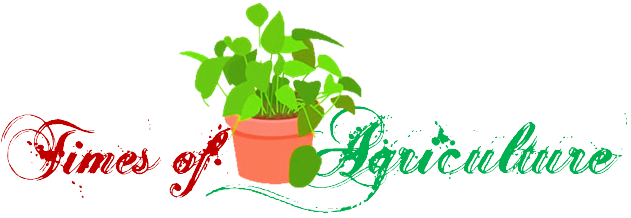15 Different Types of Holly Bushes to Enhance the Beauty of Your Garden
According to legends of Pagan rituals, the holly bush symbolizes changing seasons and a countdown to Christmas. It is considered to be the heart of mid-winter, that is on 22nd December, the day of the shortest day and longest night. It gives hope and a sweet lesson on patience.
Holly Bush holds historic and cultural significance, and today it is known to be one of the best bushes, suited for homes and landscaping. So If you want to cover your outer walls with beautiful berry-bushes as foundation plants, then you should learn about these different types of Holly Bushes.
With beautiful foliage year-round and bright-coloured berries during summer or in winter, the Holly Bush adds life to the garden. It could be used for screening purposes, and its hardy nature allows it to grow in regions with climatic differences. It is drought-tolerant and thrives well in extremely hot summers as well as frosty winters. Some of these varieties are used in making beverages and a few are toxic too. Most of the Holly Bushes belong to the Aquifoliaceae family.
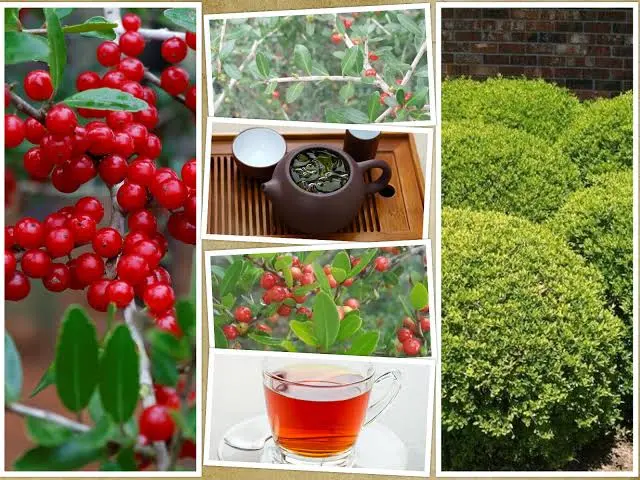
Also Read: 20 Types of Succulent that Can Survive Winter
Holly bushes differ from each other in terms of their shape, coarse or Bushes textured leaves, the colour of their berries or the presence of spines, etc. Their diversity is their beauty. You can choose any one of these for your garden as per your liking, after all, there are 480 species of Deciduous and evergreen Holly Bushes available that are shrubs, climbers and even trees.
One thing you must know about Holly bushes is that they are dioecious, which means male and female flowers are present on different plants, so both shall be grown together. Even so, these are propagated by cuttings, not seeds. But if there is space for a single Holly bush such as in a pot, bonsai, etc, then one can adopt ‘Nellie R. Stevens,’ which originated from the cross between English holly (Ilex aquifolium) and Chinese holly (Ilex cornuta), this plant shows parthenocarpic properties, that means it can beer fruits without pollination.
Different Types of Holly Bushes
1. Canary American Holly
| Common Name | Canary American Holly |
| Scientific Name | Ilex opaca ‘Canary’ |
| Plant Height | Upto 50 feet in the wild. |
| USDA Zone | 5-9 |
| Plant Type | Tree Type |
| Origin | Eastern and Central U.S. |
Canary American Holly bush is not our daily household shrub, it is one of the spiniest, and hardy shrubs that grow tall and don’t feel appealing to our eyes. It bears bright yellow berries, and even the foliage is spiny. Due to its tree-like and spiny nature, it could be used for a bird garden, shade, or a foundation plant, this feature makes it resistant to deer as well. It will take a lot of space in the garden to spread its stems. It bears beautiful white flowers that could also be used for cut flower purposes.
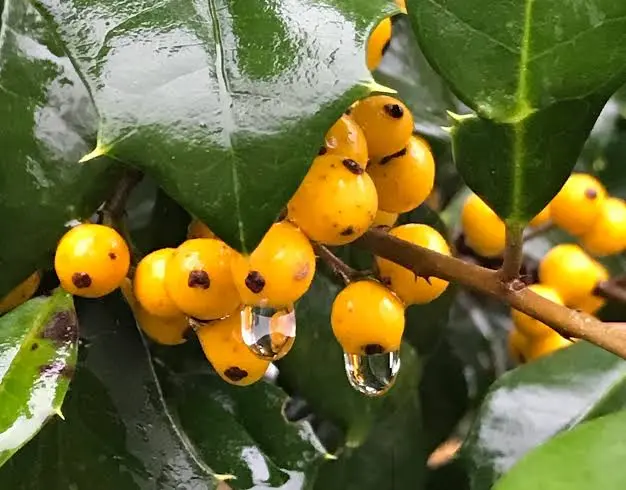
2. Silver Crown Holly
| Common Name | Steward’s Silver Crown Holly |
| Scientific Name | I. opaca ‘Steward’s Silver Crown’ |
| Plant Height | 25 feet in the wild. |
| USDA Zone | 5-9 |
| Plant Type | Evergreen Shrub |
| Origin | S. America |
Silver Crown Holly Bush has showy variegated leaves. Outer rough boundaries are lemonade yellow and the inner portion of the leaf lamina is shiny green. People who like unique foliage beauties should adopt this plant. It is named after a nurseryman, T. Linwood Steward, of Pittman, New Jersey, who discovered this mutation in a seven-year-old American holly plant. It bears beautiful red berries that give a contrast effect to the plant. It could be used as a foundation plant, hedge or as a specimen plant.
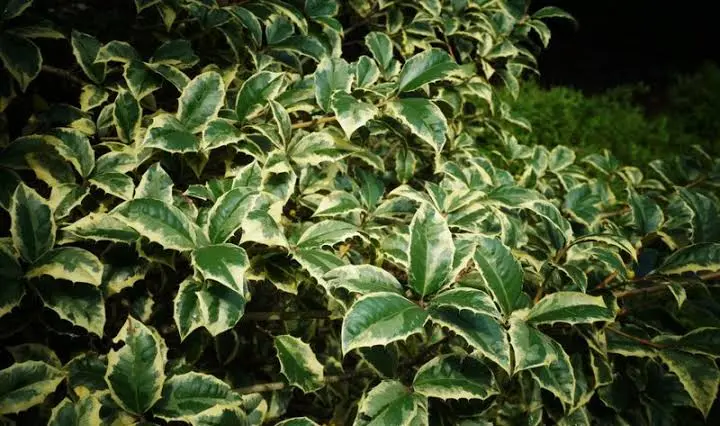
3. Yerba mate
| Common Name | Yerba mate plant, maté, yerba matá, Paraguay tea, Alex paraguayensis |
| Scientific Name | Ilex paraguariensis |
| Plant Height | 5-50 feet |
| USDA Zone | 9-10 |
| Plant Type | Subtropical Evergreen Tree |
| Origin | South America |
Yerba Mate is a unique holly bush, it is much more popular for its beverage uses, instead for ornamental uses. Its thick green elongated leaves are infused with caffeine and widely grown for making tea. It bears small white, fragrant flowers during fall. One bottleneck of this plant is that it can’t thrive in regions receiving high rainfall, low temperature and continuous moist soil. It is best to grow Yerba Mate Holly in a well-draining pot indoors, where it can continuously receive a temperature above 60° Fahrenheit all year.
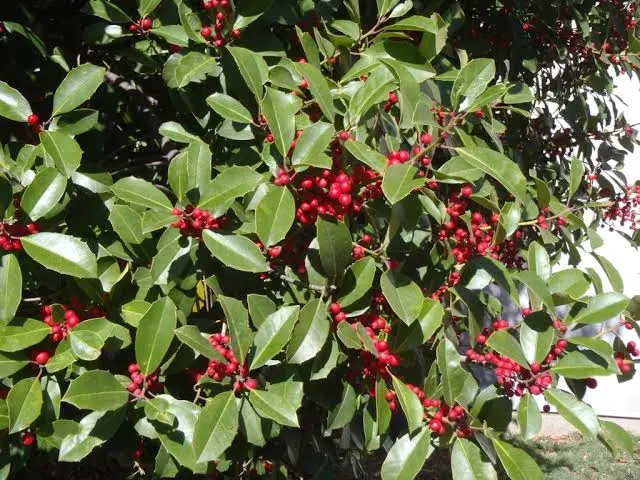
4. China Girl Holly
| Common Name | China Girl Blue Holly |
| Scientific Name | Ilex x meserveae ‘Mesog’ |
| Plant Height | 6-10 feet |
| USDA Zone | 4-9 |
| Plant Type | Evergreen Shrub |
| Origin | South Asia |
The leaves of China Girl Holly Bushes are exceptionally green leaves. It bears red berries, which act as an important and favourite food for migratory birds. It has a fast-spreading tendency, so timely pruning is important in this bush. To ensure berries in this amazing bush, it is partnered with China Boy as a pollenizer. Because of its multiple benefits, this bush has a high demand on the global market. It is one of the best Holly bushes for your garden that could be used for making hedges, foundation plants, specimen plants, potting, screening, etc.
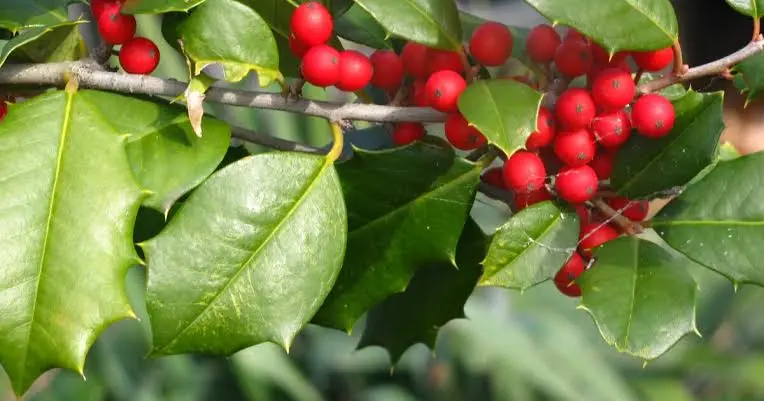
5. Luster Leaf Holly
| Common Name | Tarajo Holly, or just Tarajo, Luster Leaf Holly. |
| Scientific Name | Ilex latifolia |
| Plant Height | 15-25 feet |
| USDA Zone | 7-9 |
| Plant Type | Evergreen Tree |
| Origin | Southern Japan |
Unlike other Holly Bushes, luster leaf Holly indeed has broad lushy leaves. The huge leaves are used to brew tea in China. The leaves are rough at corners and the plants look nothing similar to a bush. The berries of this Holly bush are not as vibrant as other Holly bushes, these are brownish or dull Red. Still, they add colours to the garden during winter.
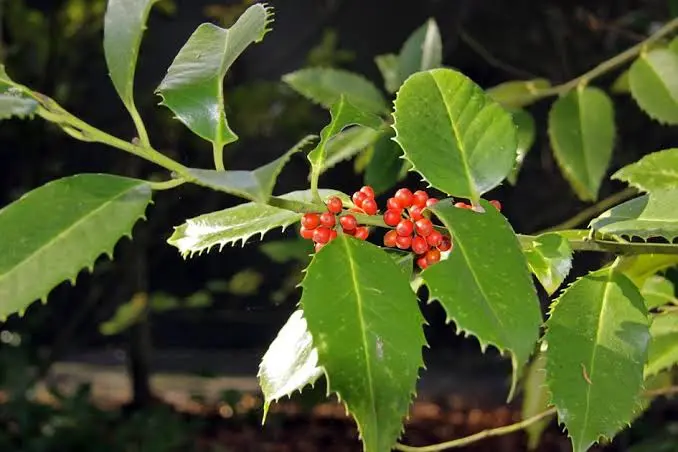
6. Sky Pencil Japanese Holly
| Common Name | Sky Pencil Japanese Holly |
| Scientific Name | Ilex crenata ‘Sky Pencil‘ |
| Plant Height | 5-8 feet but grow only up to 3 feet in width |
| USDA Zone | 5-8 |
| Plant Type | Evergreen Shrub |
| Origin | Honshu, Japan |
Sky pencil is named after the appearance of its leaves that grow straight and upright, the pointed end facing towards the sky. It may look like a straight pencil out of the box, but it is not the sharpest one, it is spineless and bears dark-purple berries. It is one of the shrubs that could be grown in crowded urban areas, in parking lots, beside the roads without any disturbances and for screening purposes. They grow naturally in a unique symmetry hence it needs low maintenance. The flowers are the rewards in the growing period of these straight-head plants. It thrives best in partial shade and slightly acidic soil.

7. Drops of Gold
| Common Name | Drops of Gold, Japanese Holly. |
| Scientific Name | Ilex crenata ‘Japanese Holly’ |
| Plant Height | It can grow up to 4-8 feet. |
| USDA Zone | 5- 8 |
| Plant Type | Evergreen Shrub. |
| Origin | It is native to Japan, Korea and China. |
Drops of Gold as the name suggests, this holly bush bears bright yellow-green variegated leaves. The leaves and stems are spineless and black berries are another unique feature of this plant. The variation in leaf colour is observed when different intensities of sunlight are provided to it, and hence seasonal variations also occur. If it is planted in a shady area, it loses the yellow colour in its leaves and becomes more yellowish when exposure to direct sunlight increases.
The flowers of Japanese Holly are four-petaled and white, these bloom during summer and don’t have a specific scent. It is hardy and according to Dirr’s Encyclopedia of Trees and Shrubs, All holly males can pollinate any female holly if they both flower at the same time. It could be used for making hedges or a specimen tree.
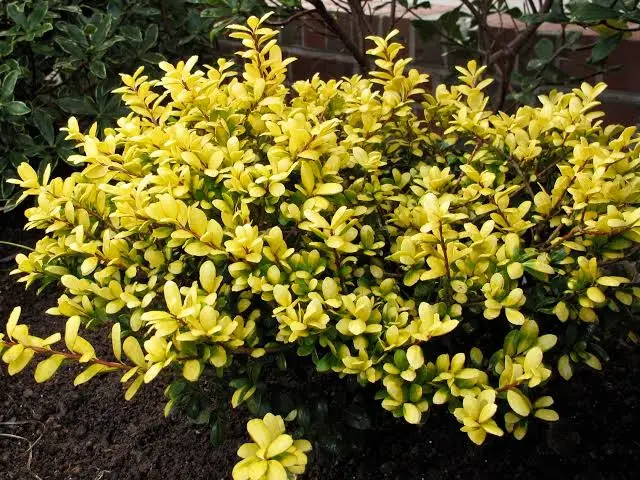
How to Care for Desert Rose Plant
8. Carolina Holly
| Common Name | Carolina Holly, Ambiguous Winterberry, Possum Holland, etc. |
| Scientific Name | Ilex ambigua |
| Plant Height | 15-20 feet. |
| USDA Zone | 7-9 |
| Plant Type | Deciduous Shrub |
| Origin | Southeast U. S |
Carolina Holy is one of the widely known deciduous Holly Bush. It bears fruit during the fall and hence, doesn’t seem visually interesting. The fruit is tender and may fall easily. It is spineless and its leaves are small and light green. It is not commonly used in landscaping, but it can act as a screening plant or as a foundation plant.
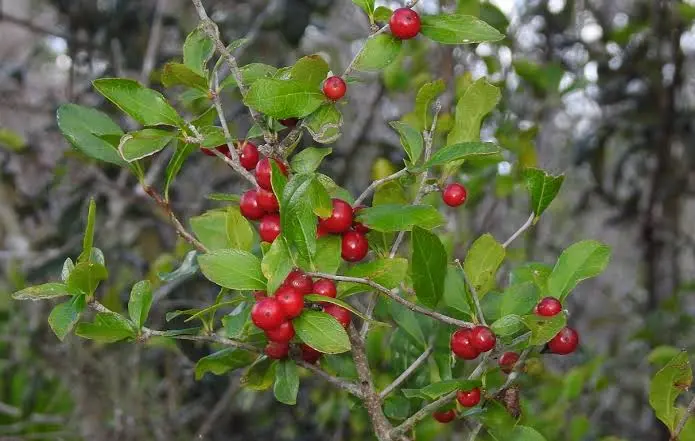
9. Catberry
| Common Name | Catberry Holly, Mountain Holly. |
| Scientific Name | Ilex mucronata |
| Plant Height | 6-10 feet |
| USDA Zone | 4 |
| Plant Type | Evergreen Medium Shrub |
| Origin | Eastern North America |
Before being identified as Holly Bush. Catberry was previously known as Nemopanthus mucronatus. This holly bush is not adaptable to many regions and is like moisture-rich conditions. The bright red berries emerge at the end of the stem of this plant, which is a favourite fruit to many migratory Birds. The foliage of this plant doesn’t have spines. It could be used for making hedges or as a specimen plant.

10. Common Winterberry
| Common Name | Common Winterberry, Hollyberry, Fever Bush, or Swamp Bush. |
| Scientific Name | llex verticillata |
| Plant Height | 3-15 feet |
| USDA Zone | 3-9 |
| Plant Type | Deciduous Bush |
| Origin | North America |
This is not the kind of Holly bush one would like to have in their garden. The berries in this bush are toxic to both humans and animals. It looks similar to Catberry and bears similar red-coloured berries, but one needs to be careful with it. It has a rounded growth and loves moist or even in swampy conditions. There are many varieties of this plant available including, Berry Poppins, Winter Gold, Red Sprite, or Cacapon that differ by slight changes in its berries colour. Despite being toxic it is widely used for making hedges.
It has spineless, dark green leaves and bright red berries that are prevalent from winter till spring. It can tolerate high temperatures, poor drainage and dry periods and is known for its extremely hardy nature. It turns into a beautiful round-shaped specimen due to its wide-spreading habit and frequent sucker-producing tendency.
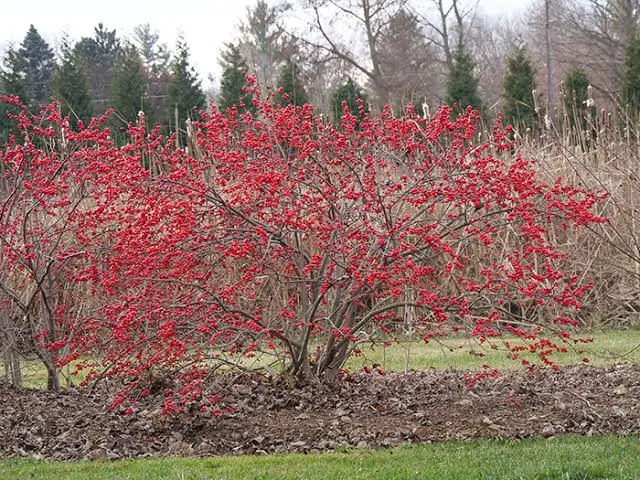
11. Dahoon Holly
| Common Name | Dahoon Holly, Cassena |
| Scientific Name | Ilex cassine |
| Plant Height | 20-40 feets |
| USDA Zone | 5-10 |
| Plant Type | Small tree |
| Origin | Caribbean, Eastern United States, and Mexico. |
Unlike other bushes, the Dahoon Holly bush is found in wetter and swampy areas. The leaves are dark lush green, smooth and elongated. It bears scarlet berries in mass which gives a beautiful visual effect. There are three popular varieties of Dahoon Holly:
- Ilex cassine var. cassine.
- Ilex cassine var. angustifolia.
- Ilex cassine var. mexicana.
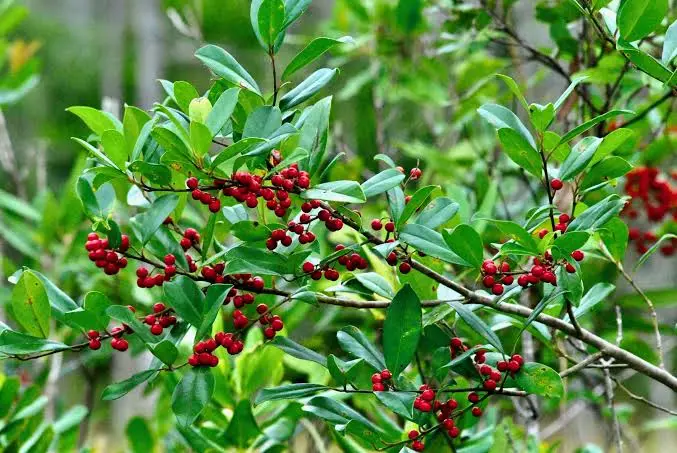
12. Hawaiian Holly
| Common Name | Hawaiian Holly |
| Scientific Name | Ilex anomala |
| Plant Height | 30-40 feets |
| USDA Zone | 11-12 |
| Plant Type | Tall shrub |
| Origin | Hawaii |
Hawaiian Holly is endemic to the Hawaii islands where it is called ʻAiea, kāwaʻu, kä‘awa‘u, or Hawai’i holly. It has smooth rounded leaves, with no spines and bears small star-shaped white flowers. It is similar to inkberry and produces purple-black berries. It is home to the happy face spider plant (Theridion grallator), which seeks safety, shade and nutrition from the shrub.
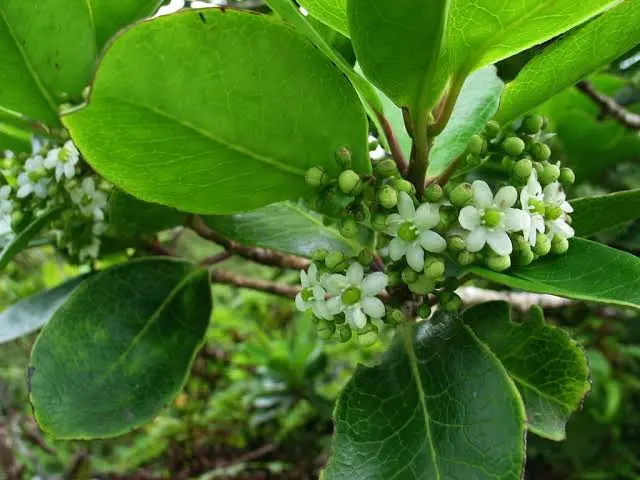
13. Variegated English Holly
| Common Name | Variegated English Holly |
| Scientific Name | Ilex aquifolium ‘Argentea Marginata’ |
| Plant Height | 15-40 feets |
| USDA Zone | 7-9 |
| Plant Type | Spiny Wood |
| Origin | Native to Europe and England |
The leaves of English Variegated English Holly are lush green with a greyish-white or yellow border. It is highly demanded for its foliage beauty. These thrive best in slightly acidic soil, they can tolerate drought conditions but are sensitive to chilly winters. Due to its unique foliage and spiny stem, it is used in Christmas greenery arrangements, as a foundation plant, specimen plant, etc. The plant contains Saponin, which makes it toxic to humans on ingestion. It bears pink to white flowers in spring and red berries in winter.
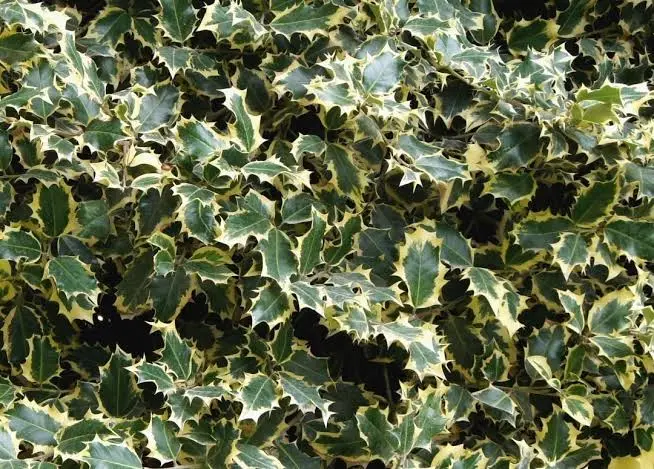
14. Bordeaux Yaupon Holly
| Common Name | Bordeaux Holly |
| Scientific Name | Ilex vomitoria ‘Bordeaux’ |
| Plant Height | 2-3 feet |
| USDA Zone | 7-9 |
| Plant Type | Dwarf Evergreen Bushes |
| Origin | Eastern United States and Mexico. |
The young and winter foliage of this bush are Burgundy tinted, these turn greyish-white as the plant matures, which is why it is called as Bordeaux Holly. It is wood, broad-leaved and bears scarlet berries. It is highly valued for its mounted form. The leaves and stems of these bushes have fine spineless leaves. It can be used for making Bonsai, hedge or a specimen Plant. In addition, Bordeaux Yaupon HollyBush is highly tolerant to drought and saline conditions.
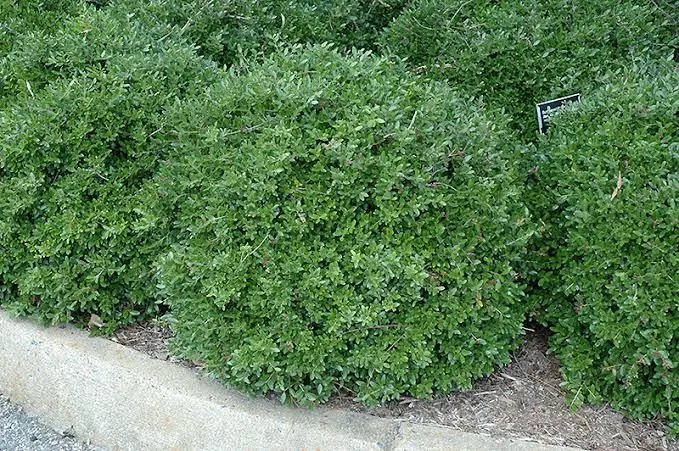
15. Inkberry Holly
| Common Name | Inkberry holly, Gallberry, Appalachian tea. |
| Scientific Name | Ilex glabra |
| Plant Height | 5-10 feet |
| USDA Zone | 4-11 |
| Plant Type | Bush |
| Origin | North America |
Inkberry Holly is a broad-leaved upward-growing shrub. ‘Inkberry’ as the name suggests, has dark purple or black berries which are highly toxic to humans and pets. However, ‘The Ivory Queen’ and ‘Leucocarpa’ bear white berries, hence they are not favourable for domestication. And as the genus ‘glabra’ suggests, it has smooth round leaves. It bears small white flowers. As this bush has invasive growing habits, heavy pruning is suggested in its care. It is highly drought tolerant, but extremely sensitive to water logging, which means it likes dry feet most of the time.

Conclusion
Fruit-bearing bushes are one of the best hedge-making plants, the contrast and liveliness they create in the garden is incomparable to any other plant. In this article, we came to know about such different types of holly bushes. The diversity of these bushes must have given you many ideas about the selection and adoption of these plants. Although you need a ‘his’ with ‘hers’ to grow berries for fruit bearing and seeds, yet, the results are equally satisfying.
